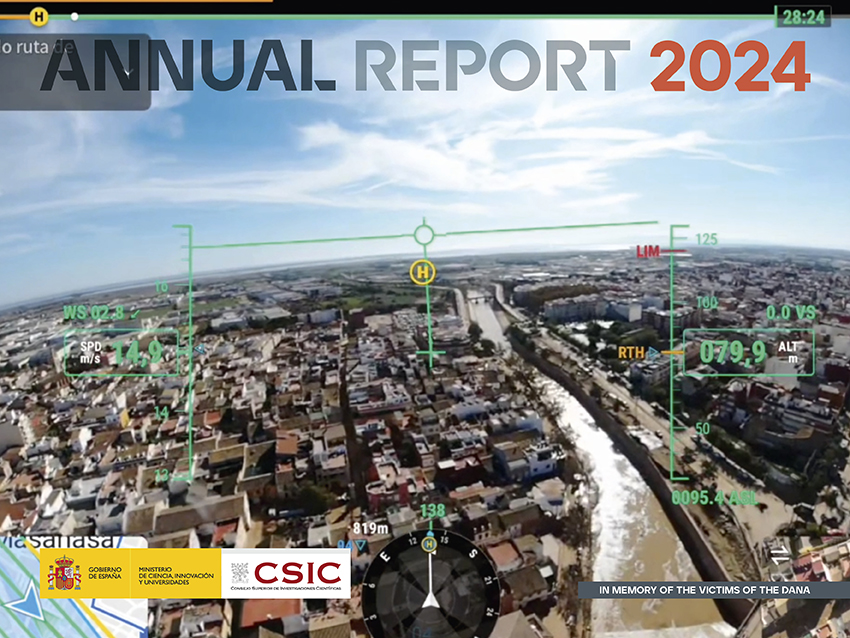
Annual Report of the scientific and technical activity of the CSIC.
The annual report is now produced in digital format, which means there are fewer limitations on the text content and it is possible to increase the number of images and charts.
The so-called contemporary or post-restructuring reports were drawn up between 1986 and 2002 following a philosophy of trying to systematise the content in two ways: firstly, the acquisition of results, and secondly, bringing the organisation closer to the public. As of 1993, the basic structure of the Annual Reports centred on the scientific programme, the technical and/or support centres, and scientific outreach, as the nexus of efforts to bring science to society. Another aspect which took on a more central role was international scientific cooperation, without overlooking the funding of scientific activity.
During this period the annual reports took on a more popular-science character in an attempt to bring scientific activity closer to society. There was recognition in this period that the complexity of the CSIC and its myriad centres would make it impossible to provide exhaustive information about all their activities. Therefore, readers were referred to the individual centre reports for details of their achievements in the year in question. The work done by the centres was summarised in a schematic outline of the research activity conducted. The Annual Reports focused on the task of managing resources and the scope of that management.
In the second half of the 1960s there was a transformation in the structure of the annual reports. They changed from being viewed as a historical report on the year's activity and became an annual statistical report. Emphasis was shifted from achievements of specific researchers to the collective work and group research lines, in short, highlighting global research policy. The quantitative data predominated over the expression of individual work, which was represented by the statistics. In this period a strong UNESCO influence was patent. The organisation and systematisation of the scientific and knowledge areas was adopted, reflecting a aspiration of the CSIC to fully integrate itself with the international scientific community.
In the early years of the CSIC standards for the drafting of the Annual Report gave the centres considerable liberty in terms of the form and length of their submissions, which led to their being considerable heterogeneity among the data supplied, and although this enriched the account of the activities undertaken, it meant that the amount of information given varied greatly from one centre to the next.